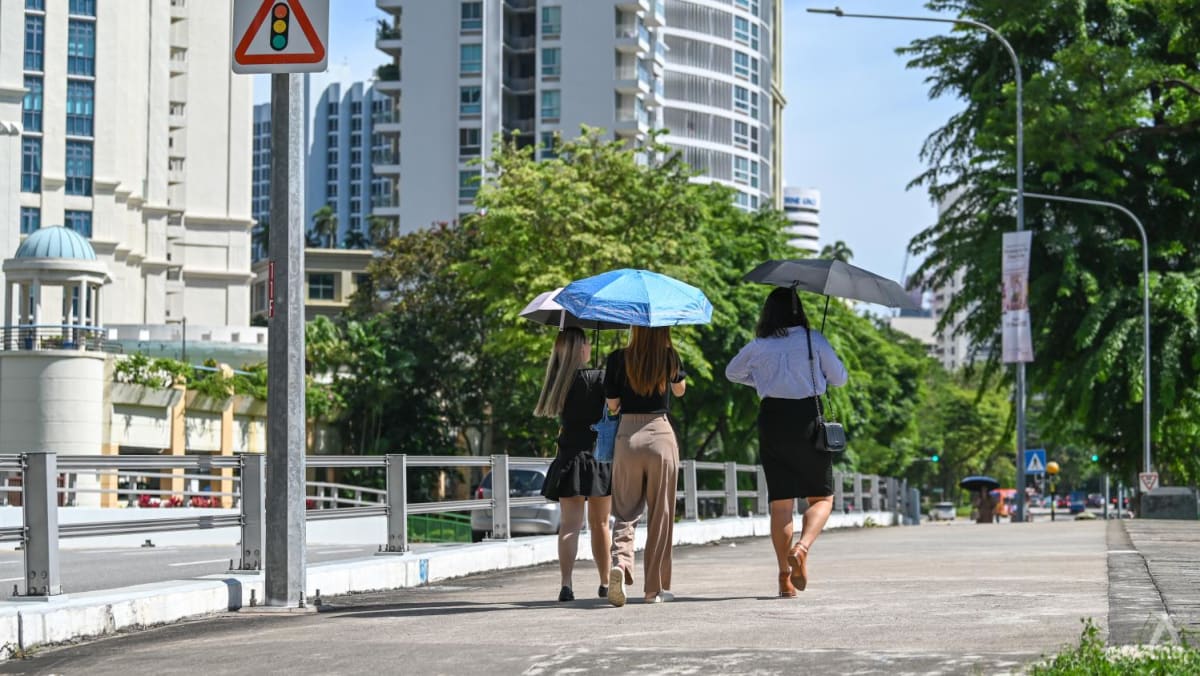
WHAT CAUSED THE RECORD TEMPERATURE THEN?
For a start, the inter-monsoon months of April and May are usually the warmest.
Daily maximum temperatures went past 34 degrees Celsius on most days in April and so far in May, with some days exceeding 35 degrees Celsius, the Meteorological Service Singapore (MSS) said.
“On May 13, 2023, the high temperatures were due to few clouds, no rain and light winds, which resulted in strong solar heating of land areas,” MSS said.
Apart from Ang Mo Kio, other parts of Singapore recorded high temperatures as well that day, an MSS spokesperson added. This includes Admiralty at 36.7 degrees Celsius, Paya Lebar at 36.6 degrees Celsius and Choa Chu Kang at 36.3 degrees Celsius.
Associate professor of urban climate Winston Chow from the Singapore Management University cited the lack of cloud cover over the weekend, in addition to climate change and the location of an automatic weather station in an urban area.
Weather experts described Ang Mo Kio as a highly urbanised area with a lack of forest and water bodies. And it’s not just Ang Mo Kio.
“Year after year, the highest mean temperatures are found mostly in the area bounded by Ang Mo Kio, Hougang, Bedok and Whampoa,” said Dr Koh, who is also co-chair of the Working Group for Asian Australian Monsoon under the World Climate Research Programme.
“So with a high baseline mean, daytime temperature can spike more easily in this region when the country experiences a hot anomaly.”
NUS’ Prof Roth said his research has shown that daytime heat exposure in Singapore is most severe in built-up areas that have low-rise buildings, a high percentage of impervious surfaces and a lack of vegetation. He named Serangoon and Woodlands as examples.
As to why Ang Mo Kio in particular, Prof Roth said there was “no easy answer”.
“The MSS weather station which has measured this value is, as far as I know, located on a rooftop, and hence its exposure may not be ideal to represent the temperature of a larger area.”
But the location is less important than the fact that there is a new record temperature in May, which is slightly higher than the 36.7 degrees Celsius measured in May 2022 at Admiralty, he said.
Both Ang Mo Kio and Admiralty represent heavily urbanised areas typically characterised by high daytime air temperatures, Prof Roth said.
“This is due to the abundance of heat-absorbing artificial materials (for example concrete and asphalt), absence of vegetated areas and lack of shade, which all promote efficient absorption of incoming solar radiation and subsequent heating of the near-surface air.”
WHAT’S TO COME
While rain is expected to ease the hot weather over the next few days, experts say that temperatures are still set to rise down the road.
NTU’s Prof Horton pointed to the weather phenomenon El Nino, which is expected to develop in the coming months, resulting in higher temperatures.
“For the last three or so years, we were in the cool wet phase called La Nina, and that’s why last year we experienced very high rainfall.
“But now the climate variability is reaching towards El Nino, so unfortunately for Singapore, the worst is yet to come,” he said.
“This time next year, we probably have an 80 per cent chance to have a full-blown El Nino. When we are in a full-blown El Nino, temperatures may be much hotter than we experienced on Saturday.”
